13 Wild Animals in Eritrea [Wildlife in Eritrea]
Want to know more about the wildlife in Eritrea?
Discover 13 wild animals in Eritrea in this post, as well as interesting facts about them. 🇪🇷
Learn All About Eritrean Animals
Ready to learn all about Eritrean animals?
I’ve always been fascinated by animals and by how they can be so different from one country to another. In this guide, we’ll focus on the many animals Eritrea has on the land, in the sky, and underwater.
I’ve split the guide into 4 categories:
- Native animals from Eritrea
- Endangered animals of Eritrea
- What is the national animal of Eritrea?
- How many animals native to Eritrea?
Let’s dive in right away with our first category!
Native Animals from Eritrea
Eritrea is an African country located in the eastern part of the continent, in the Horn of Africa. It is a multi-ethnic country with nine different, large groups, and it used to be a British colony. It is bordered by Sudan, Djibouti, and Sudan, and its capital and largest city is Asmara, which counts more than 963,000 inhabitants (but more than 1,258,000 if you include the metropolitan area).
An interesting part of the country that I wanted to tackle is its wildlife. In light of that, I have listed the best of it, and I hope you will love learning what animals live in Eritrea.
Here’s the Eritrea animals list.
1. Aardvark
- Name: Aardvark
- Scientific name: Orycteropus afer
- Conservation status:
The aardvark is definitely a unique and peculiar creature. It is a medium-sized species of nocturnal mammal native to almost all of sub-Saharan Africa, and it is an insectivore that uses its sharp claws to dig out ants and termites.
This animal digs to create burrows in which it lives, rests, and protects its young. Even though it is considered of least concern, for now, its numbers are decreasing. Interestingly enough, it is related to manatees, hyraxes, and elephants!
2. Rock hyrax
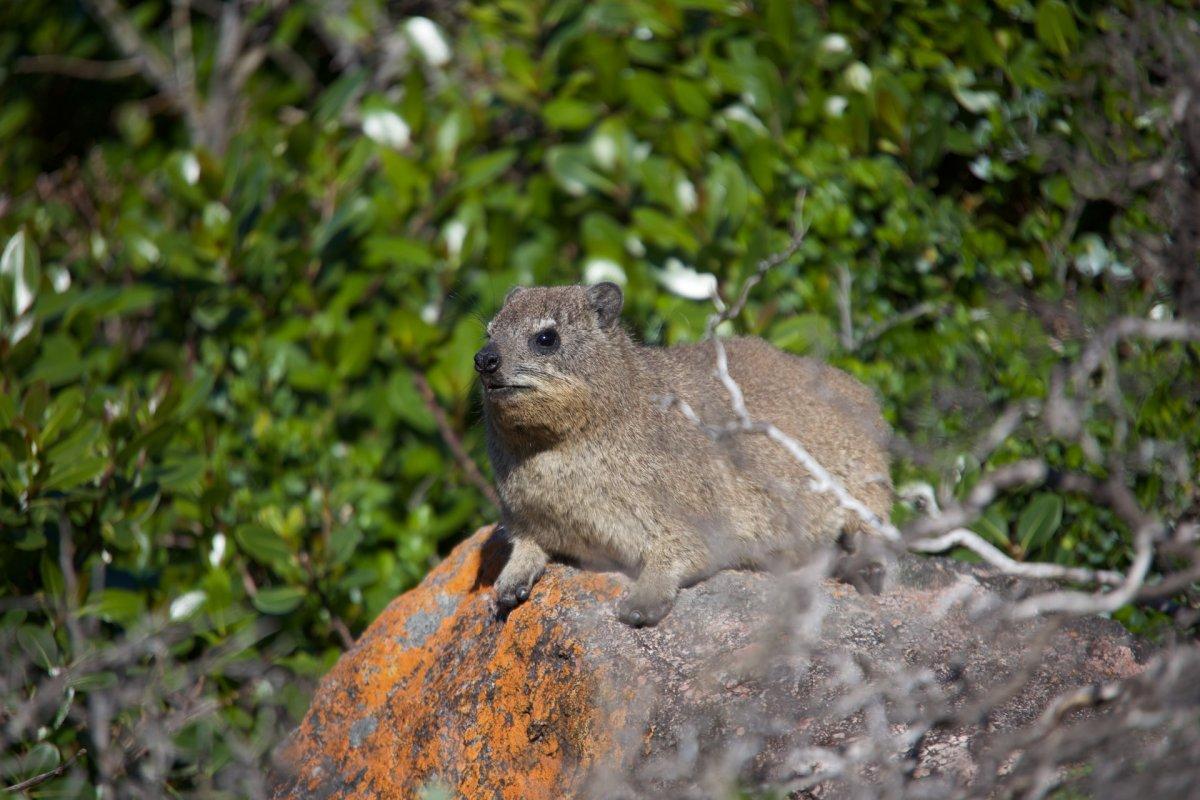
- Name: Rock hyrax
- Scientific name: Procavia capensis
- Conservation status:
Speaking of hyraxes, here is the rock hyrax, a small species of terrestrial mammal native to Africa and the Middle East. Also known as the coney, the rock rabbit, the dassie, and the Cape hyrax, it has short ears and a tail.
The rock hyrax lives in groups of about 10 to 80 individuals, usually in rock crevices, which are perfect to escape from predators. This species is under no threat of extinction and is even considered a minor pest in some areas.
3. African bush elephant
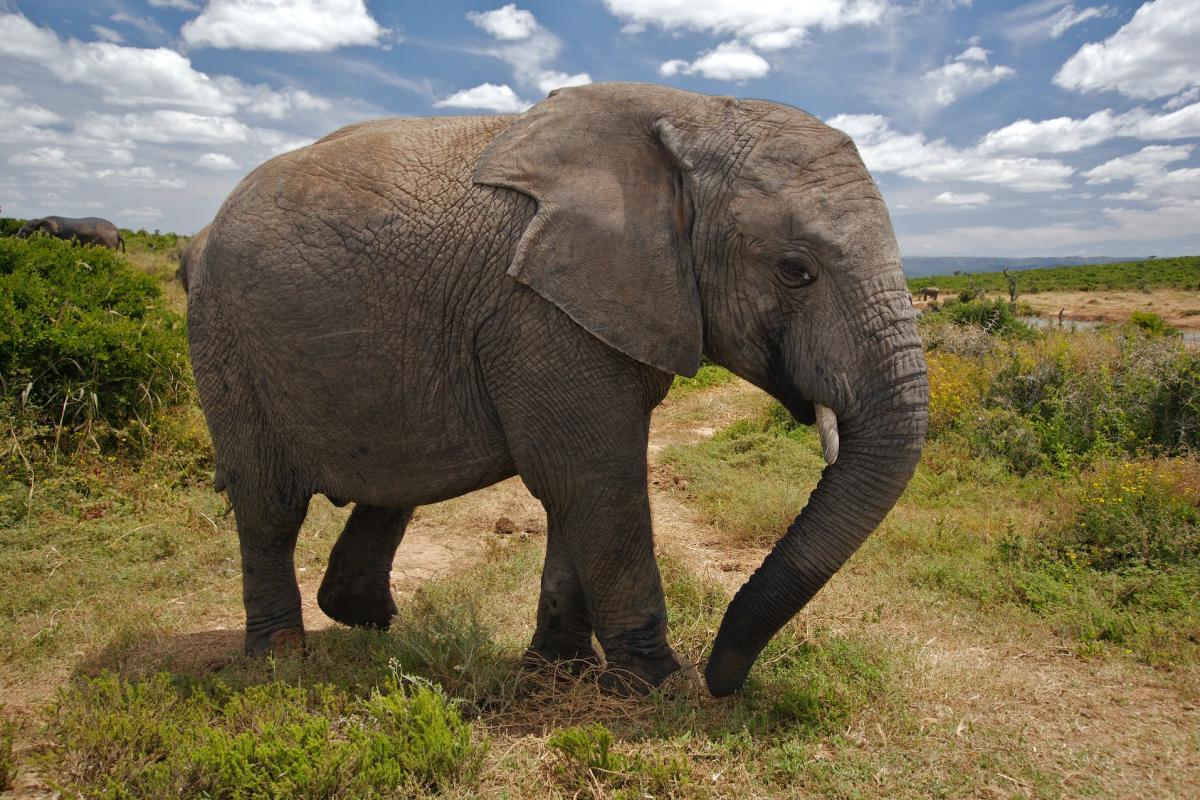
- Name: African bush elephant
- Scientific name: Loxodonta africana
- Conservation status:
The African bush elephant is one of the most notorious animals from Africa. Also known as the African savanna elephant, it is one of two living African elephant species and is the largest living terrestrial mammal. It can be found across 37 African countries, usually in grasslands, woodlands, agricultural land, forests, and wetlands.
Sadly, as you most likely know, the African bush elephant is severely threatened by habitat destruction and poaching for its ivory and meat.
4. Dugong

- Name: Dugong
- Scientific name: Dugong dugon
- Conservation status:
While there are no manatees in Eritrea, the aardvark still has another relative of his, another member of the order Sirenia: the dugong. This marine mammal can be found around the coastline of eastern Africa, the Arabian Peninsula, Southeast Asia, and northern Australia.
The dugong populations are fragmented, and many of them are believed to be close to extinction. The main threats these animals face are human activities, and the fact that they live in shallow coastal waters definitely does not help them.
5. Mantled guereza
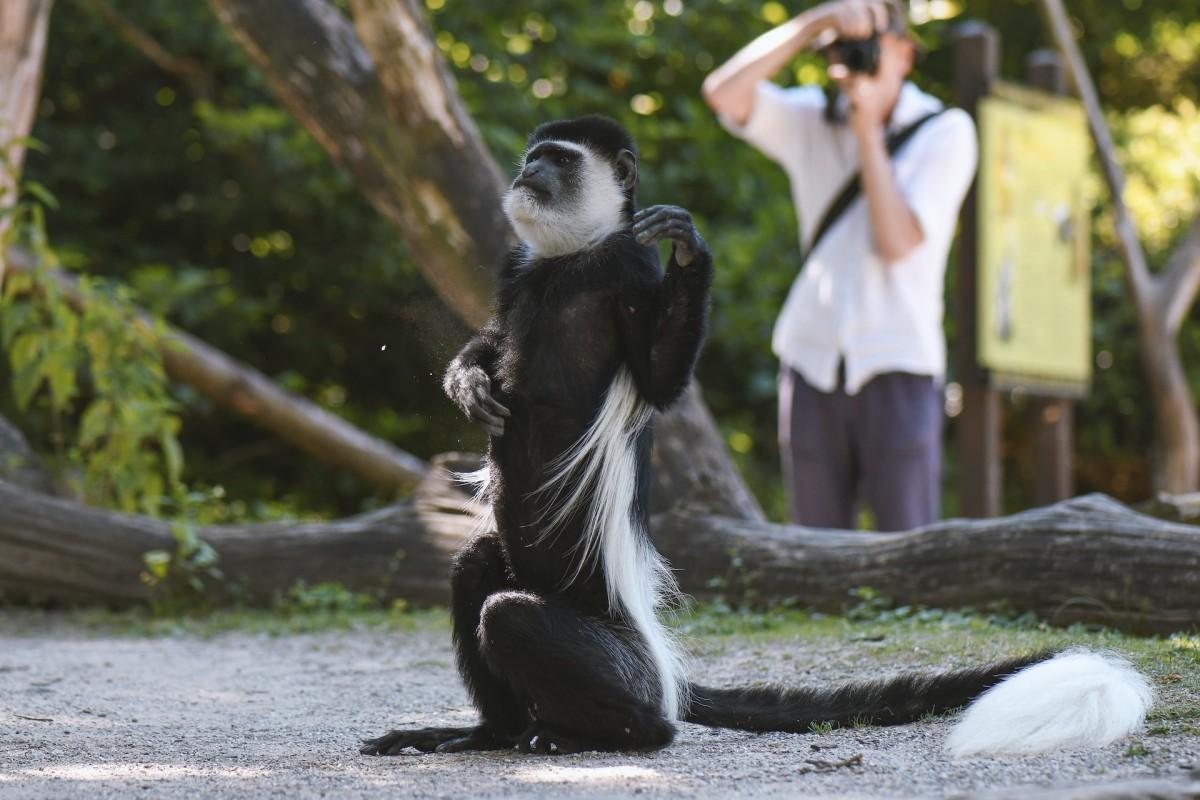
- Name: Mantled guereza
- Scientific name: Colobus guereza
- Conservation status:
The mantled guereza, also known as the eastern black-and-white colobus, is a species of Old World monkey native to most of Central and East Africa, including Eritrea, Ethiopia, Cameroon, and Nigeria, among other countries.
It is a diurnal and arboreal animal that lives in evergreen and deciduous forests. It can usually be seen in groups of 3 to 15 individuals, including a dominant male, several females, and their offspring, while adult males usually live in solitude or in bachelor groups.
6. Helmeted guineafowl
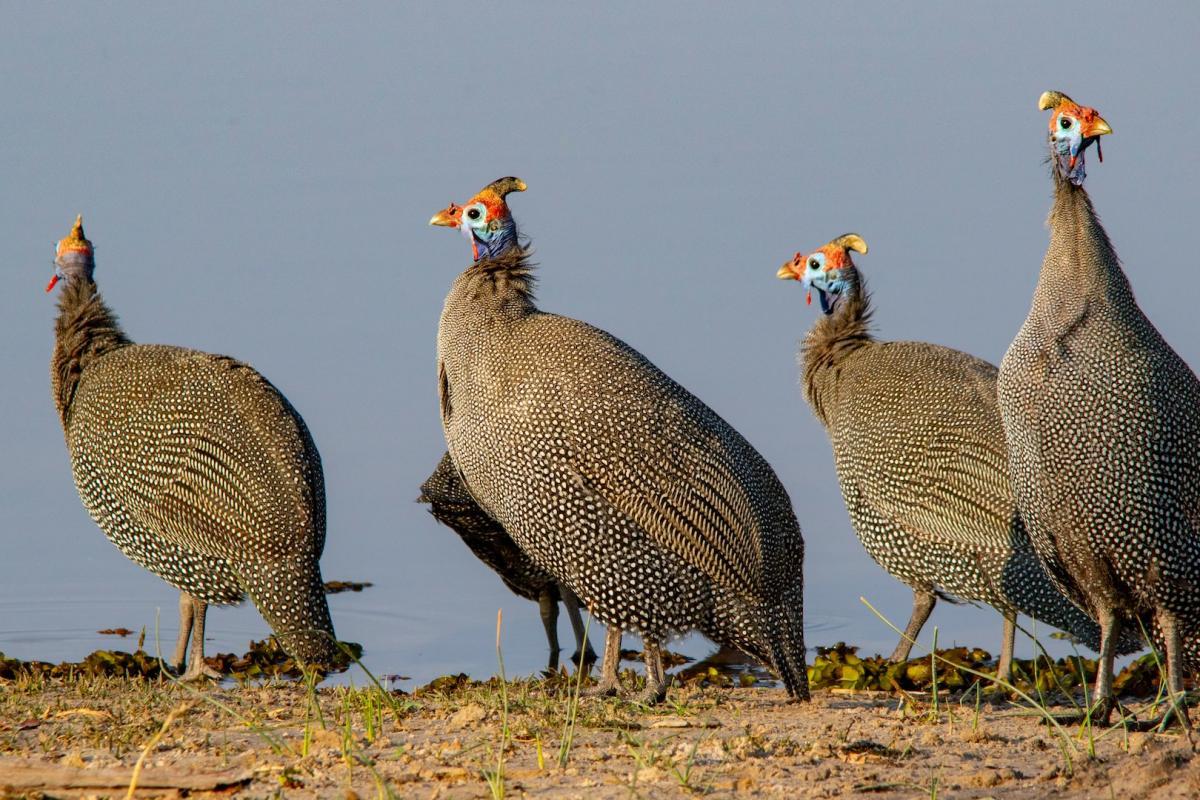
- Name: Helmeted guineafowl
- Scientific name: Numida meleagris
- Conservation status:
You might have never heard of it, but the helmeted guineafowl is a peculiar species. This bird is native to Africa, mostly south of the Sahara, and has been introduced as a domestic species in North America, Europe, and Australia.
It is a social animal that forms flocks of about 25 birds, and it is particularly useful to control Lyme disease, as it feeds on massive quantities of ticks.
7. African darter
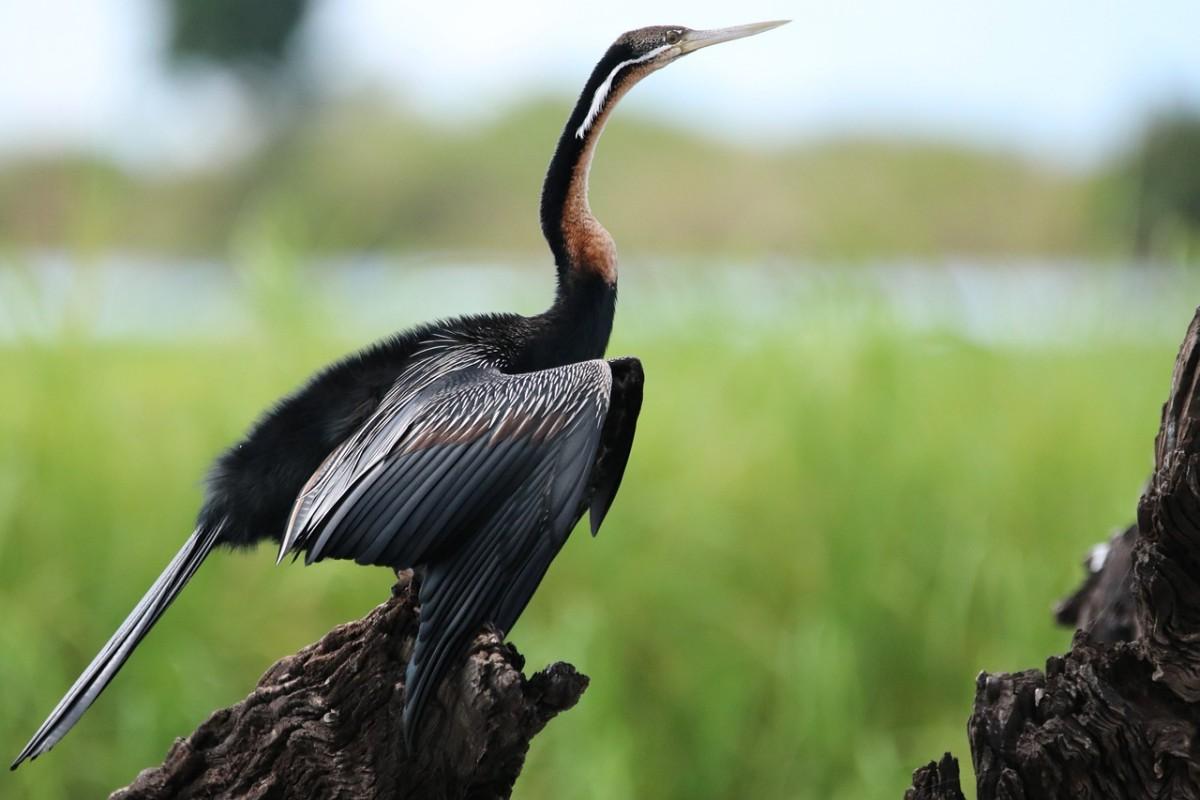
- Name: African darter
- Scientific name: Anhinga rufa
- Conservation status:
The African darter, also known as the snakebird, is a species of bird native to sub-Saharan Africa and Iraq.
As its name suggests, it literally behaves like a snake when hunting for fish. It swims with only the neck above water, and strikes extremely quickly its prey, with its beak acting like a spear. After that, it needs to dry its feathers to have heat insulation, which is why it can easily be seen sitting along the waterside, spreading its wings.
8. Secretary bird
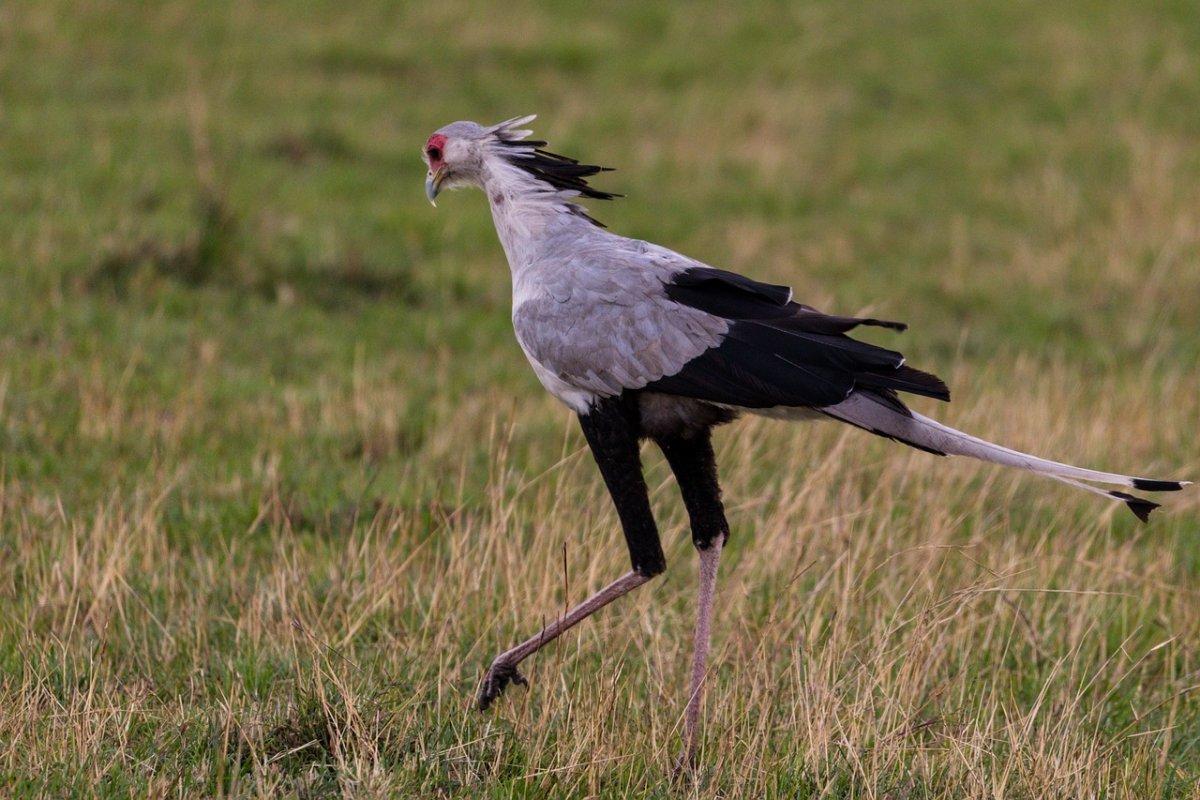
- Name: Secretary bird
- Scientific name: Sagittarius serpentarius
- Conservation status:
The secretary bird is a large species of bird of prey native to most of sub-Saharan Africa. It is mostly terrestrial, endemic to Africa, and can be found in open areas and savannas.
Easily recognizable due to its very large size with an eagle-like body on crane-like legs, it can reach as high as 1.3 m / 4 ft 3 in. Though its range is very large, the population of the secretary bird is rapidly declining, mostly due to habitat degradation.
9. African fish eagle
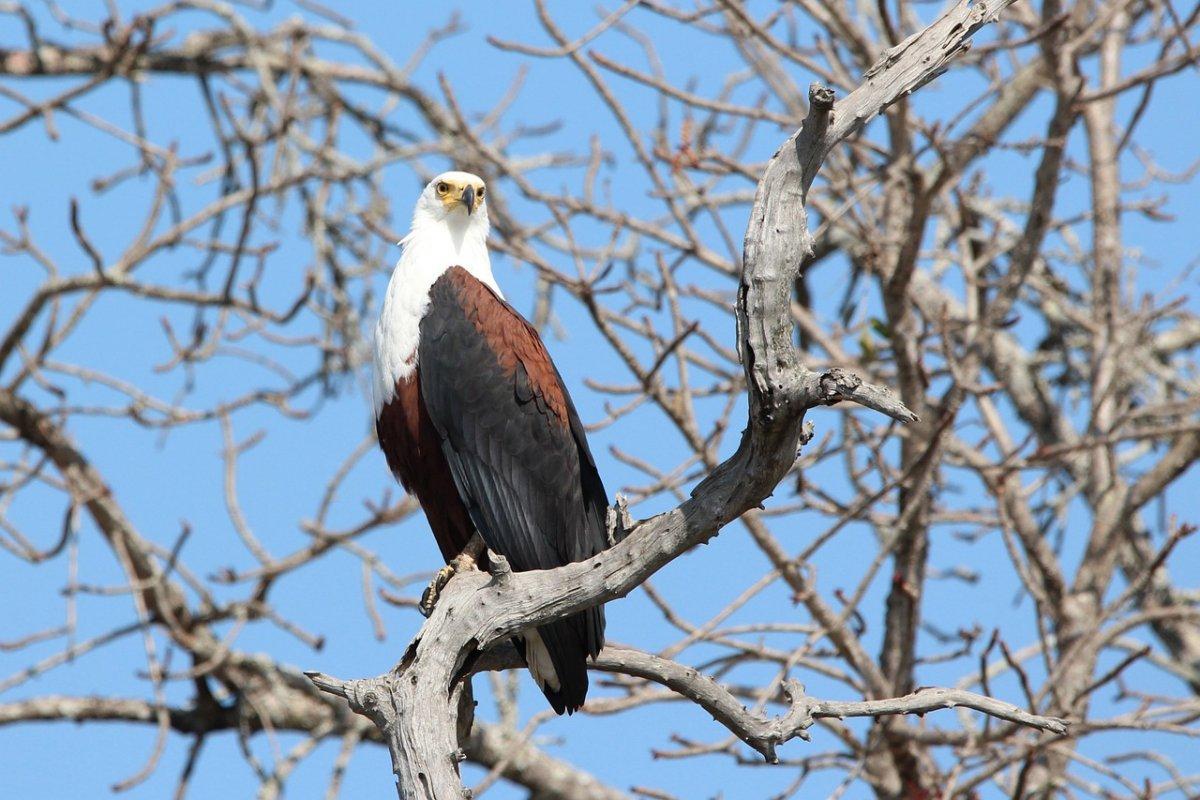
- Name: African fish eagle
- Scientific name: Haliaeetus vocifer
- Conservation status:
The African fish eagle, also known as the African sea eagle, is a large species of eagle that can be found next to water bodies in sub-Saharan Africa. It is the national bird of Zimbabwe, Zambia, and Namibia, and thanks to its large range, it is fairly known in the entire continent, and in many different languages.
As its name implies, the African fish eagle mostly feeds on fish: it flies down from a perch in a tree and catches its prey, clings onto it, and eats it.
10. Crested porcupine
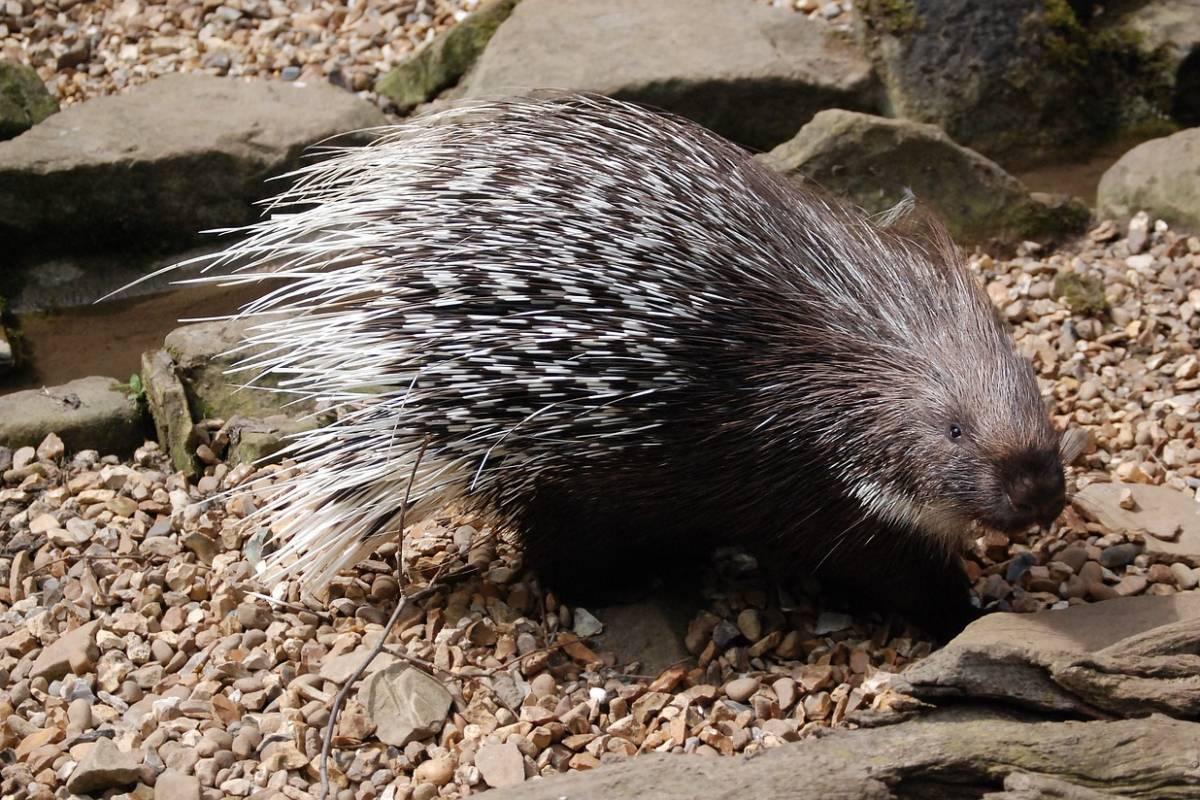
- Name: Crested porcupine
- Scientific name: Hystrix cristata
- Conservation status:
The crested porcupine, also known as the African crested porcupine, is a species of rodent native to sub-Saharan Africa, North Africa, and Italy. Though it was thought to be introduced to Europe by the Romans, fossil records show that it already lived there.
This rodent is a terrestrial animal that very rarely climbs trees but can swim if needed. Interestingly enough, it collects… bones. And stores them in a cave or an underground chamber. Pretty creepy, huh?
11. Northeast African cheetah
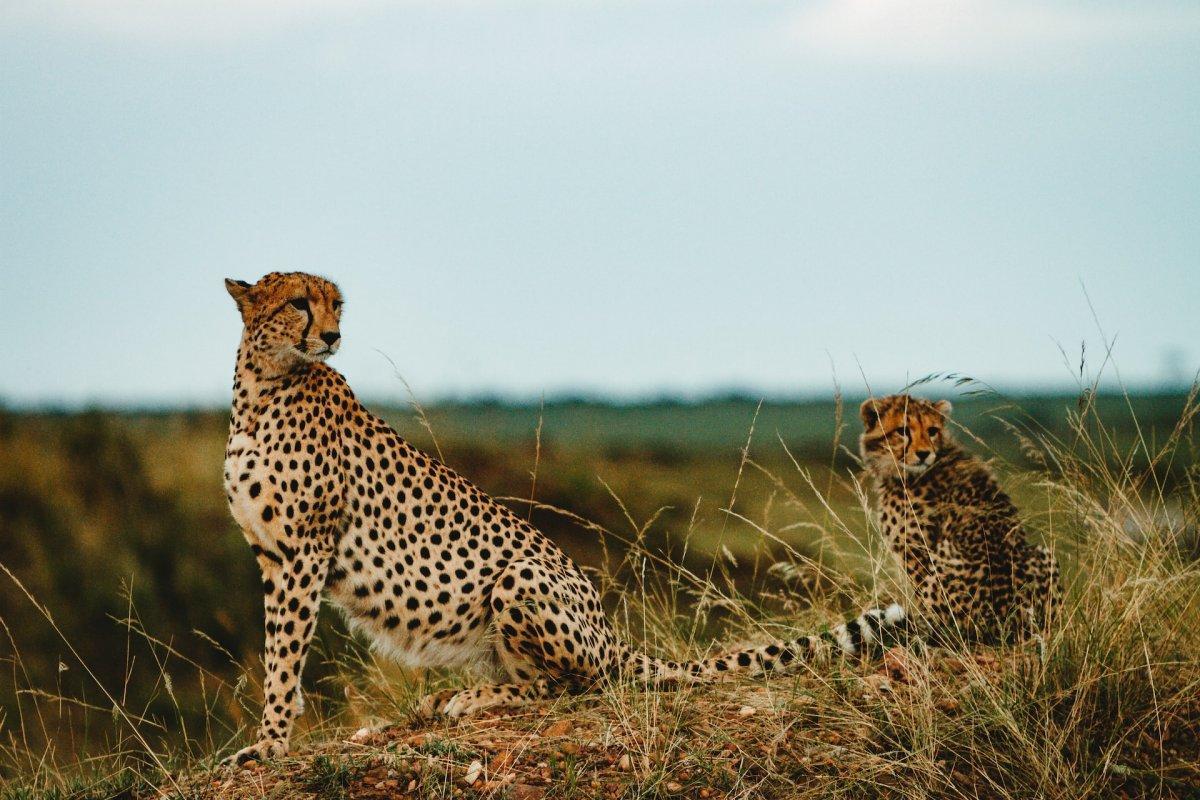
- Name: Northeast African cheetah
- Scientific name: Acinonyx jubatus soemmeringii
- Conservation status:
The Northeast African cheetah is a cheetah subspecies living in most of the northeastern quadrant of the continent. Also known as the Sudan cheetah, there are about 950 individuals living in protected areas, compared to 1,150 to 4,500 during the 1970s. The reason for this drastic decline is poaching, hunting, habitat loss, and prey depletion.
Unfortunately, breeding in captivity is not a great solution to save this species, as it usually simply does not do it.
12. African wild dog
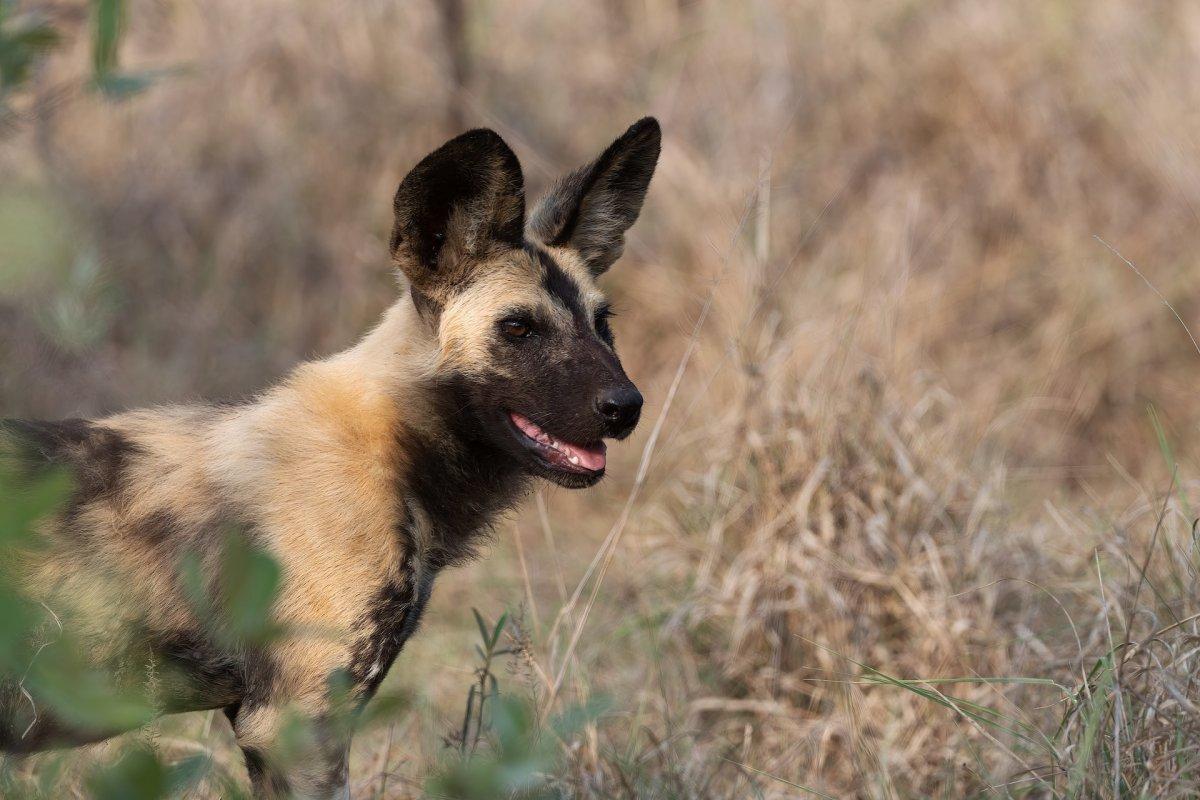
- Name: African wild dog
- Scientific name: Lycaon pictus
- Conservation status:
The African wild dog, also known as the African painted dog or the African hunting dog, is a species of wild canine native to sub-Saharan Africa. It is the largest wild canine on the continent, and it is a hypercarnivore.
There are about 6,600 African wild dogs in the wilderness, and they are highly social and live in packs. These packs are sadly severely threatened by human persecution, diseases, and habitat fragmentation.
13. Spotted hyena
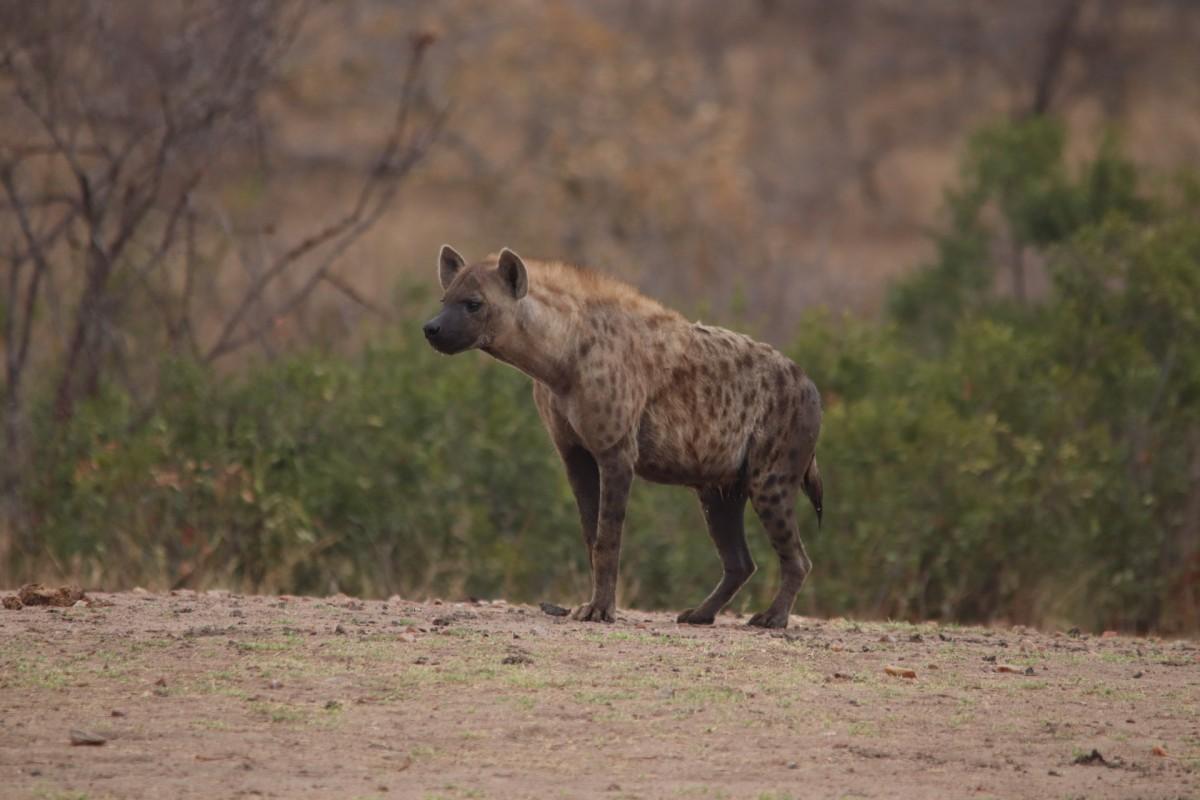
- Name: Spotted hyena
- Scientific name: Crocuta crocuta
- Conservation status:
The spotted hyena, most notoriously known as the laughing hyena, is a species of hyena native to sub-Saharan Africa. It has a bear-like build with round ears and is experiencing declines in population outside of protected areas due to poaching and habitat loss.
It is the most social animal of the Carnivora order, as it lives in the most complex and largest groups: its organization resembles that of primates such as baboons and macaques, with respect to group size and hierarchy.
—
So there you have them, these were my 13 Eritrean wild animals. I hope you enjoyed this list and that you learned something new today.
In case you want to learn more about animals in the country, feel free to keep reading, as I still have lots of things to tell you about:
Endangered Animals of Eritrea
This is definitely the saddest part of the list, but it is essential to raise awareness. Because of this, let’s go through the list of endangered animals in Eritrea.
Here are the animals in danger of extinction in Eritrea.
- None
- Sand tiger shark
- Halavi guitarfish
- Sociable lapwing
- Black rhino
- Hawksbill turtle
- and 12 more…
- African spurred tortoise
- Lappet-faced vulture
- Grey reef shark
- Maccoa duck
- African savanna elephant
- and 27 more…
To see the full list of endangered species in Eritrea, head over to the International Union for Conservation of Nature’s Red List.
What is the National Animal of Eritrea?
The national animal of Eritrea is the dromedary.
Sometimes called the Arabian camel, the dromedary actually only has one hump on its back. It is a species of even-toed ungulate and the tallest species of camel.
Unlike other camels, the dromedary has a long, curved neck as well as a narrow chest. It is largely domesticated, and it is active during the daytime. In the wild, it forms herds of about 20 individuals that are led by a dominant male. In Eritrea, it is an important cultural symbol as well as an old means of transport.
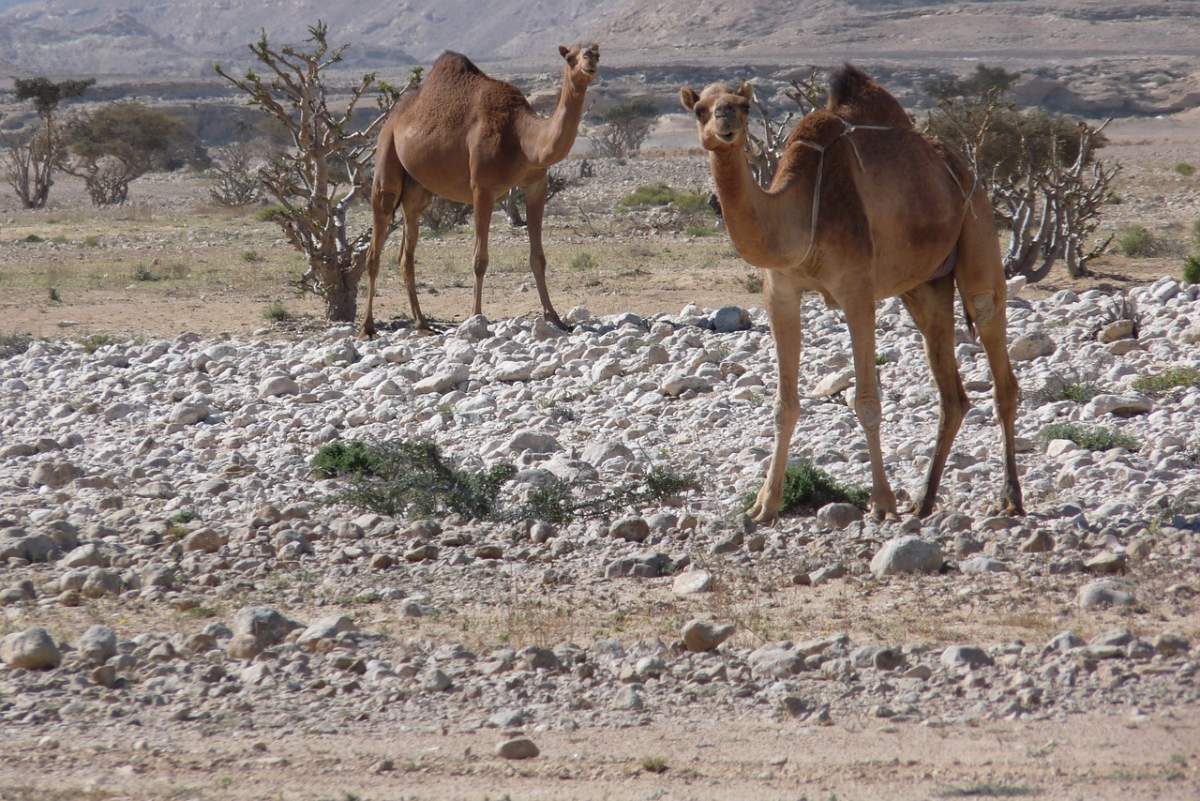
How Many Animals Native to Eritrea?
What is the diversity of native animals in Eritrea?
Let’s look at the total number of species of Chordata (mammals, birds, fishes, and reptiles).
Total number of animal species in Eritrea: 1,653 (14,205 in total in sub-Saharan Africa)
More About Animals in the World!
Loved these Eritrea animal facts? Want to see what animals live in other countries?
Then check out these posts:
Or click here to see ALL the facts up on the blog! Spoiler alert: there’s A LOT of them.
Share the knowledge! Click on the buttons below to share information about these famous animals in Eritrea with your friends, and help them learn more about the world 🙂
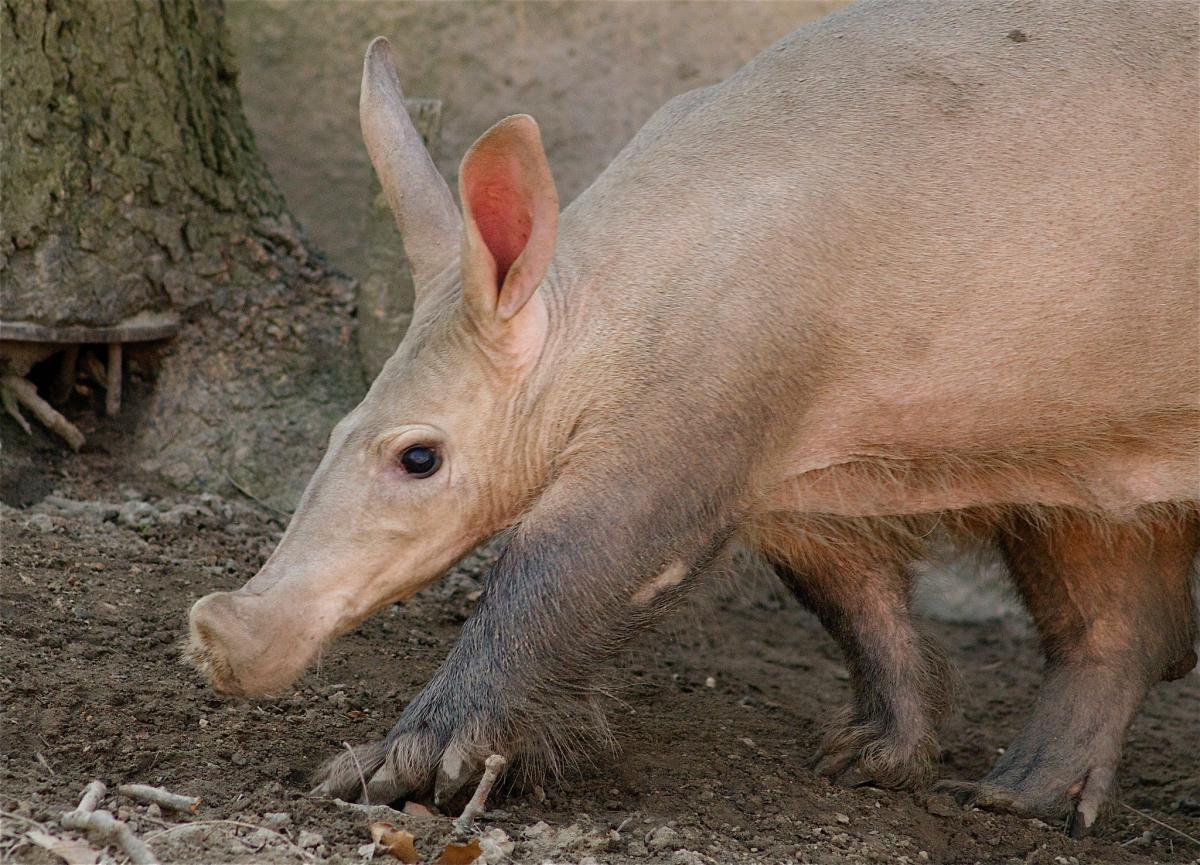

![13 Wild Animals in Guinea [Wildlife in Guinea]](https://www.kevmrc.com/wp-content/uploads/2022/12/13-wild-animals-in-guinea.jpg)
![13 Wild Animals in Illinois [Wildlife in Illinois]](https://www.kevmrc.com/wp-content/uploads/2023/07/13-wild-animals-in-illinois.jpg)
![10 Wild Animals in Algeria [Wildlife in Algeria]](https://www.kevmrc.com/wp-content/uploads/2022/11/10-wild-animals-in-algeria.jpg)
Eritrea wasn’t a British coloni, but italian